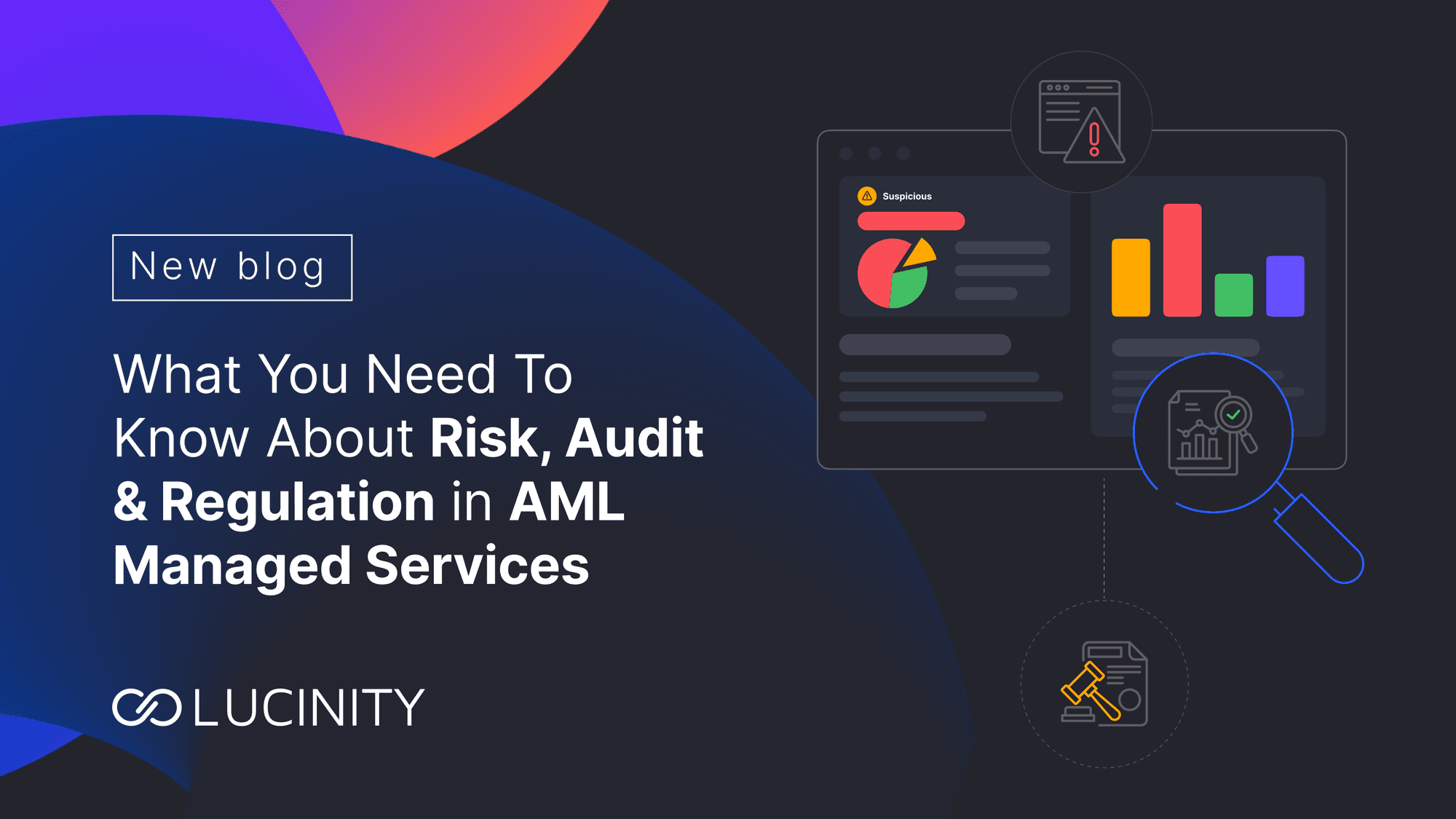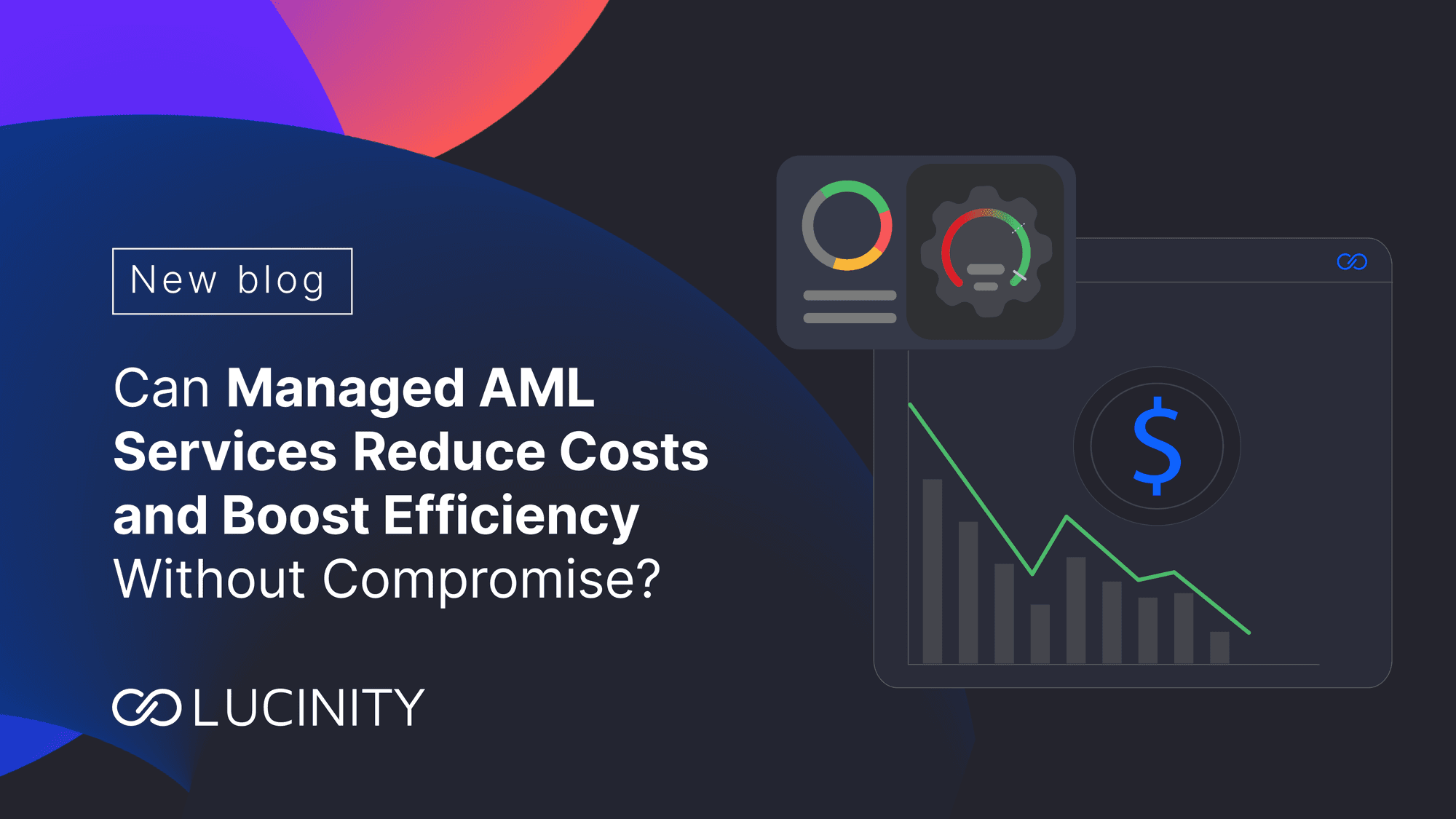Generative AI as a Force-Multiplier in Compliance and Beyond
Lucinity explores Generative AI such as chatGPT offers exciting opportunities for Financial Institutions, particularly in the field of Financial Crime and compliance investigations.
“Give assistance, not advice, in a crisis” — Aesop
It seems almost ironic how a quote written over 2,500 years ago by an ancient Greek storyteller still holds true in today's world of cutting-edge technology, such as Generative Artificial Intelligence (GenAI).
While concerns have been raised about the potential dangers and misuse of GenAI by criminals, it's important to acknowledge that this relatively new and largely unregulated technology is already being exploited.
Despite these challenges, GenAI offers exciting opportunities for Financial Institutions (FI), particularly in the field of Financial Crime and Compliance investigations. By leveraging GenAI, FIs can enhance their ability to detect and report financial crimes to regulatory and law enforcement bodies. This presents a tremendous opportunity for FIs to improve their overall compliance and risk management efforts.
Targeting Optimal Efficiency
From the very beginning of computer technology and automation in business processes, there has been a relentless pursuit of greater efficiency and optimization. As a result, businesses have sought ways to leverage machines to achieve an advantage in areas that were once the exclusive domain of humans. In the field of Compliance, the traditional processes for Know Your Customer (KYC) and Transaction Monitoring have undergone a remarkable transformation in terms of processing speed. However, as these systems have developed, so too have financial crime typologies evolved, constantly staying one step ahead of deployed compliance systems and processes.
Improving business efficiency is essential for achieving success and boosting profits. Traditionally, compliance has focused on quantifying their processes by processing more alerts and reducing false alarms. They're also adopting automation tools like Robotic Process Automation (RPA) to simplify complex tasks and streamline their work.
Generative AI changes the rules of the game
GenAI represents a major breakthrough in technology, as it enables machines to replicate qualitative capabilities that were previously unheard of. For example, GenAI algorithms can be trained to write content or narratives about a case or suspicious activity report (SAR). This is an exciting development that has the potential to transform the way we approach compliance and risk management, as well as streamline the reporting process.
Looking at the UK SAR regime as an example, the statistics from 2022 revealed that nearly one million reports were raised by FIs and other entities under its regulated framework. This is a staggering number, especially considering the growing volume of detection tools that generate data that feeds directly into the reporting process. It's easy to see how reporting generators might feel overwhelmed as they try to meet their regulatory obligations, while law enforcement agencies on the receiving end may struggle to keep up with the influx of data as they simply don’t have the resources to process those volumes.
The emergence of GenAI represents a significant breakthrough in technology, as it allows reporting units to process and advance investigations in a more agile and efficient way than ever before. For instance, a GenAI tool can provide an instant update on an ongoing case, enabling senior management to stay up-to-date and reducing disruption. It can also write a case narrative and draft a structured report that highlights all the essential elements of the case, ensuring that nothing important is overlooked.
A similar principle could be applied to Suspicious Activity Reports (SARs), whereby GenAI technology could be leveraged to enhance the quality of output. By using GenAI to structure and analyze SARs, businesses can ensure that they are better organized and easier to understand, which in turn will improve the overall quality of reporting.
In addition to the benefits mentioned above, with relevant integrations, GenAI could also provide instant checks against screening, negative news, KYC reviews, OSINT (Open Source Intelligence) and enabling faster risk assessment. It can also connect team members seamlessly without switching screens or transferring data from one platform to another. These features not only make the process faster but also provide much-needed context to an environment where criminals thrive on ambiguity.
Looking at the future, it’s easy to think of a data-sharing framework powered by GenAI that would add transparency and add light in areas where criminals thrive and prosper. How would a framework like Singapore’s COSMIC (Collaborative Sharing of ML/TF1 Information & Cases) evolve if assisted by GenAI?
Unlocking Cross-Functional Benefits with GenAI
From a risk and compliance perspective, leveraging GenAI technology presents significant operational benefits by reducing time spent on routine tasks while still producing high-quality, human-grade narrative output for decision-making.
However, the impact of GenAI will be felt beyond just risk and compliance. In many Financial Institutions (FIs), a considerable amount of resources are allocated to back-office functions such as Risk & Compliance. By leveraging GenAI, FIs can potentially free up bandwidth in Product & Technology departments, as well as compliance and operations. With access to all the public and private sources of data currently used by FIs to manage KYC, sanctions, and other critical activities, GenAI can significantly reduce the burden of accessing and maintaining these data sources.
In the right framework, the use of GenAI can enable businesses to allocate vital time towards engineering better customer outcomes and finding new efficiencies throughout the organization. This is an exciting prospect that could lead to improved business processes, better customer experiences, and ultimately, greater business success.
Can GenAI Enhance Diversity and Inclusion?
By minimizing the need for writing narratives and reports, GenAI can help Anti-Financial Crime professionals save time and energy. This way, they can focus more on analyzing information and drawing accurate conclusions, with the support of GenAI's wide range of resources. Professionals can worry less about grammar and phrasing, and concentrate on utilizing the valuable insights that GenAI has to offer.
One positive outcome of this trend could be an expansion of the candidate pool for both junior and higher-level roles. Currently, it's a known issue that well-written analysts can face a glass ceiling in some larger financial institutions. This is because their cogent reports are highly valued and considered essential to their role. By reducing the emphasis on report writing, more candidates with diverse skill sets can be considered for these roles, potentially leading to a more diverse and inclusive workplace.
GenAI has the potential to make anti-financial crime roles more inclusive and attractive to a wider range of junior staff. It can democratize the process and open doors for creative thinkers who may be discouraged by the need to write lengthy reports.
With great power comes great regulatory responsibility
Before jumping to conclusions as ominous as a machine takeover scenario, none of the above should be put in place without a comprehensive regulatory framework is implemented by the relevant actors. This entails closer collaboration between regulatory entities, FIs, and software solution providers.
As with other areas within Artificial Intelligence, GenAI must be subject of and integrated into an ethics framework, to ensure it serves the purposes it has been designed for, and it performs its duties within clearly defined boundaries. Moreover, its operational use must be closely monitored to avoid the "online training effect," where users simply click through successive slides or screens without engaging meaningfully with the content. To achieve this, a robust analytics and auditing tool must support the regulatory architecture.
It's important to approach GenAI technology with a balanced perspective that acknowledges both its potential benefits and risks. By working together to develop a comprehensive regulatory framework, we can ensure that GenAI is used in a responsible and ethical manner, benefiting businesses and society as a whole.
Conclusion
In conclusion, GenAI is a technology that is here to stay, and it has the potential to drive significant improvements across various business functions and key areas, including investigations and SAR regimes. However, it's crucial to recognize the wider legal and ethical considerations of GenAI, which go beyond traditional technology. As such, regulations must keep up and stay current with the developments of GenAI.
GenAI has the potential to make anti-financial crime roles more inclusive and appealing. By reducing the emphasis on report writing, professionals can focus on analysis and drawing accurate conclusions, leading to a more efficient and effective approach. Additionally, by reducing the emphasis on writing, GenAI can open doors for creative thinkers who may have been discouraged by lengthy reporting requirements, leading to a more diverse and inclusive workplace.
Lastly, the transformative potential of GenAI extends beyond just anti-financial crime roles. By freeing up resources, it can help other departments like Product and Technology drive innovation and improve customer experiences, ultimately leading to increased business success. To fully tap into the potential of GenAI, businesses should explore how to leverage this transformative technology to achieve greater efficiency and effectiveness across various functions.





